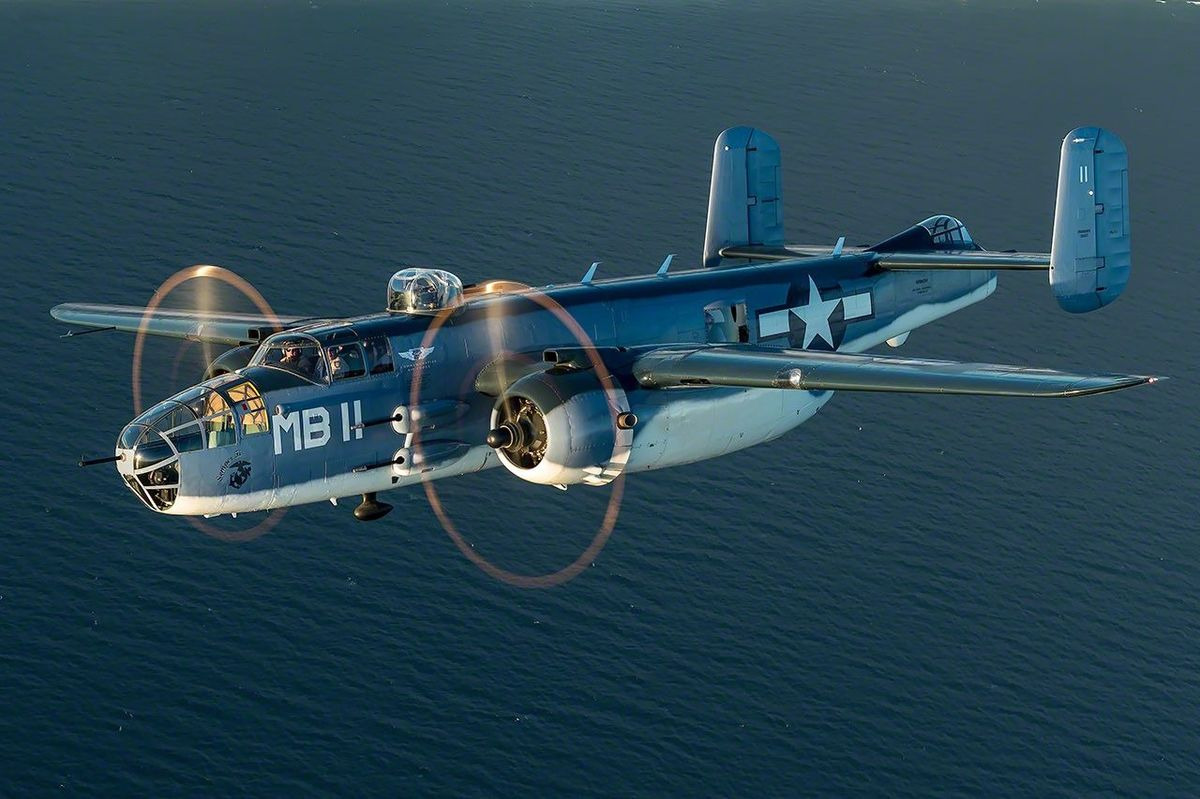History
In 1942, the Navy recognized that its flying boats, such as the PBY Catalina and PB2Y Coronado, offered excellent range but lacked the defensive armament, protection, and payload of dedicated bombers. Political opposition from the US Army initially blocked the transfer of land-based bombers to the Navy. The situation changed when the Army needed a suitable facility for the new Boeing B-29 Superfortress. The Navy owned a plant in Renton, Washington, that had been intended for the production of the twin-engine Boeing PBB-1 Sea Ranger. The Army proposed a deal: cancel the PBB-1, turn the Renton plant over for B-29 production, and in return, the Navy would receive navalized versions of Army bombers, including the B-25 Mitchell, the B-34/B-37 Ventura, and the B-24 Liberator. The Navy agreed.
In 1942, the U.S. Navy recognized that its long-range flying boats, such as the PBY Catalina and PB2Y Coronado, lacked the protection, defensive armament, and payload of true land-based bombers. The Army initially resisted transferring bomber types to the Navy, but a compromise was reached when the Army sought to acquire the Navy’s Renton, Washington plant for B-29 production. In exchange for canceling the Navy’s PBB-1 Sea Ranger program and turning the plant over, the Navy gained access to navalized versions of Army bombers, including the B-25 Mitchell, B-34/B-37 Ventura, and B-24 Liberator.
As part of this deal, batches of B-25Cs and Ds were transferred to the Navy and redesignated PBJ-1C and PBJ-1D. The first Marine Corps PBJ unit, VMB-413, was activated in March 1943, followed by several more squadrons later that year. Early PBJ operations emphasized antisubmarine patrol, with aircraft modified to carry AN/APS-3 radar. Marine units soon transitioned into long-range strike, anti-shipping, and intruder roles, pioneering low-level and night-attack tactics in the Solomons and Bismarcks by 1944.
The PBJ-1J was the final Mitchell variant adopted by the Marines. Based on the B-25J, it carried Navy radios and specialized equipment. Radar fit varied: some aircraft had nose-mounted AN/APS-3 radomes, while later production PBJ-1Js moved the installation to the right wingtip. Armament included underwing racks for up to eight 5-inch HVAR rockets, in addition to bombs.
PBJ-1Js began reaching Marine squadrons in early 1945. VMB-612 replaced its older aircraft with J-models, while other squadrons supplemented their earlier PBJs with the type. In May 1945, VMB-612 modified both its PBJ-1Ds and new PBJ-1Js to carry two 11.75-inch Tiny Tim rockets, mounted on either side of the fuselage above the bomb bay doors. These rockets were launched by free-fall and ignited after clearing the aircraft, allowing bomb loads to be carried simultaneously. PBJ-1Js employing Tiny Tims flew night missions against southern Japan in August 1945, in the final days before surrender.
By the end of the war, nine Marine PBJ squadrons had deployed overseas. Combat losses totaled 26 aircraft, with another 19 lost to operational accidents in theater. In all, the Marine Corps operated 706 PBJs across the C, D, G, H, and J models. The PBJ-1J represented the ultimate refinement and most numerous version of the Mitchell in Marine service, which had been proven as an adaptable, rugged medium bomber, effective in maritime patrol, ground-attack, and rocket strike roles.








